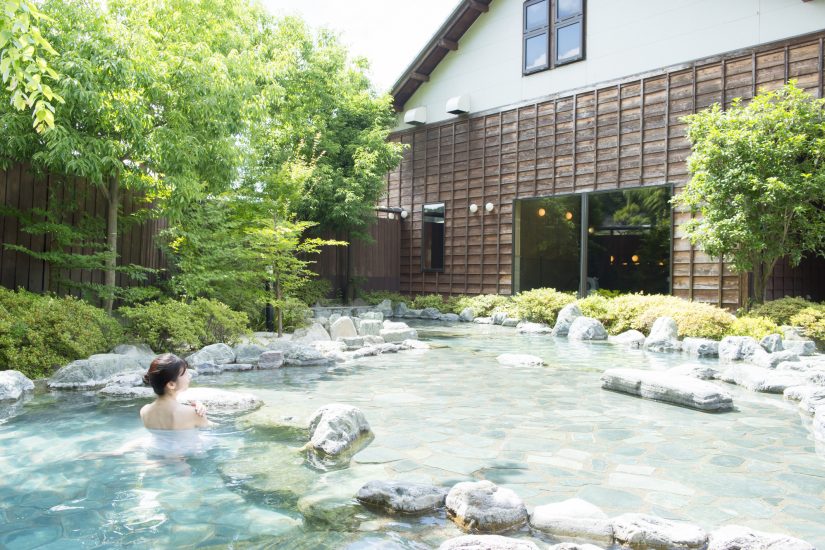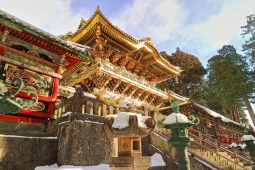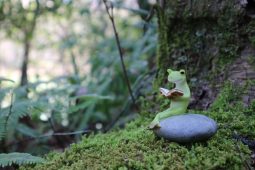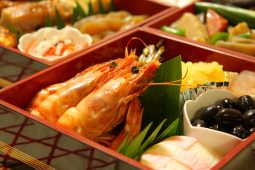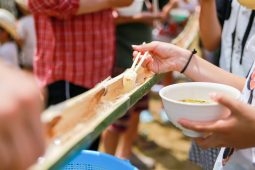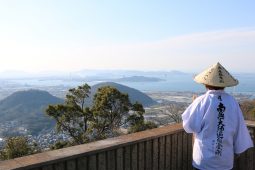Wherever you live, work or travel in Japan, you are unlikely to be far from either a sentō bath house or a natural hot spring resort or spa facility.
While usage of city sentō bath houses has declined, since most people have a bath at home, trips to hot spring resorts (onsens) are still among the most popular outings in the country.
In low-lying and upland regions alike, there is continuous geothermal activity from volcanoes warming underground streams which flow up out of the ground as hot springs. In the past, the waters’ healing properties were common knowledge, and this along with Japanese ‘groupism’ combined to create a culture of communal bathing where everyone in the community could gather, socialize and relax in the soothing hot springs.
All across Japan, there are now thousands of traditional inns and large hotels that tap into tiny hot springs deep in the mountains or exploit major hot-spring arteries —each offering an unparalleled bathing experience which takes advantage of their natural surroundings. Indeed, the habit of soaking (not washing) in hot springs is so engrained in the culture that there is even a day known as “Open-air Bath Day” (Rotemburo Day) set aside as an official public holiday on June 26th each year.
Some of the most popular sites also have historical significance and no two hot-spring resorts are the same, with differences in scenery, food served, and in the mineral composition of the water. The oldest hot-spring resort in Japan is Arima, located half-way up Mt. Rokkou near Kobe. Arima and the hot springs at Nanakuri and Tamatsukuri are mentioned in classic Japanese literature from the Heian period between 794 and 1185 A.D. Kyushu’s Oita Prefecture is known as the hot-spring capital of the world with eight famous hot-springs and over 1,000 inns catering to large numbers of tourists.
While retired couples, families and groups of company employees descend on those famous historical sites to relax and enjoy everything the inns, hotels and surrounding area have to offer, including the freshest in-season meals, there are also many open-air baths which give skiers, hikers and climbers something to look forward to after a hard day’s physical exertion in the mountains.
Japanese bathing etiquette
In some remoter districts of Japan where foreign tourists rarely visit, mixed open-air baths still exist even though the changing areas are divided into male and female facilities. While the vast majority of places are now segregated by gender, if that would bother you, you might want to check ahead in very rural regions just in case. Of course, there are also some mixed hot springs which require swimsuits, and it’s possible to rent your own private hot spring for use with family and friends over a weekend.
There are a couple of important points to bear in mind if you visit a Japanese bath house or hot-spring spa or resort for the first time.
- The Japanese use baths for soaking, not washing. This means you wash outside in designated areas before entering the communal bathing areas. The exception to this is in some unconstructed, natural open-air hot springs where there are no hygiene issues.
- Many hot-spring spas or bath houses provide shampoo, conditioner and shower gel to use freely in the washing area. You only need to bring a bath towel, and a smaller towel used to cover one’s private parts when entering and exiting the water.
All in all, as with most new experiences in Japan, by discreetly observing how the Japanese behave and imitating them in the beginning, you are unlikely to commit any major faux pas.
Other famous hot Springs
There are several thousand hot springs around Japan, but some popular areas include Kusatsu Hot Spring in Gunma Prefecture, where the water from ‘river’ in the middle of the town is a cloudy white color due to its high sulfide content, which also gives off a potent smell not dissimilar to rotten eggs. This sulfide has been filtered out in the springs used for bathing, and Kusatsu Hot Springs have some of the richest mineral content of all Japan’s hot springs, so don’t let the smell put you off! The town is also a lively place during the holiday season. Finally, Atami hot spring resort in Izumi Peninsula near Tokyo is well-known for its beautiful ocean views while Shizuoka Prefecture and Wakayama Prefecture in Kansai also have hot spring resorts located right by the sea, with wonderful scenery to enjoy as you bathe.


